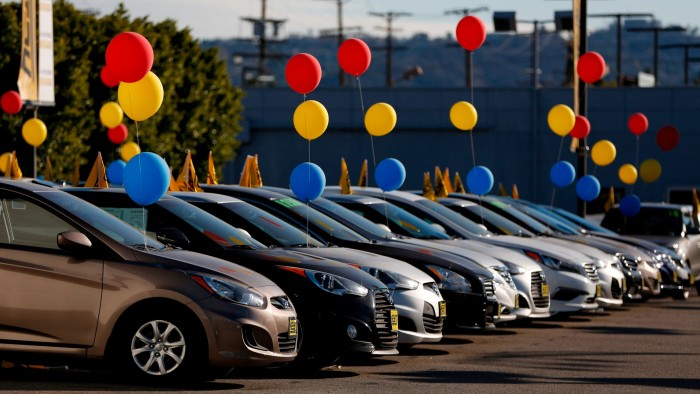Spain and Portugal blackout blamed on solar power dependency

The inability of Spain’s electricity grid to manage an unusually high supply of solar power was a key factor in Monday’s catastrophic blackout, former regulators and experts have said.
About 55 per cent of Spain’s supply was from solar sources when 15GW of electricity generation disconnected from the grid within just five seconds on Monday afternoon, triggering a wide-ranging shutdown of power systems in Spain and Portugal.
Several European experts said that Spain appeared to lack enough firm power — readily available, reliable energy supply from sources such as fossil fuels or nuclear that can be reduced or raised — to kick in when the grid’s frequency dropped sharply at 12.33pm on Monday. Frequency, the rate at which electrical current alternates, must be kept stable for the grid to function.
Spanish grid operator Red Eléctrica has said that it still does not know the exact cause of the outage. Chief executive Beatriz Corredor denied that renewables “made the system more vulnerable” in an interview with El País on Wednesday.
But André Merlin, the founder and former chief executive of France’s grid operator RTE, told the Financial Times: “Two-thirds of [Spain’s electricity] production was made up of non-controllable resources. These non-controllable resources . . . don’t contribute to the stability of the internal electrical system.”
Jorge Sanz, a leading former Spanish energy official and International Energy Agency board member, told Spanish television on Wednesday evening that an oversupply of electricity may have initially caused the problem. Normally, the grid operator would have managed this by asking traditional plants to moderate their output but this was not possible because so few plants were on line, Sanz said.
This would have been followed by a disconnection of electricity generation to avoid damage to equipment, leading in turn to an outage.
Sanz said: “There was an imbalance of supply. [The grid operator] needed to reduce electricity supply, but when it resorts to firm facilities to reduce load, it can barely do so because they were barely connected.”
Last month, transport minister Óscar Puente revealed via his X account that “an excess of voltage in the network” had caused a failure that left some high-speed rail lines out of operation for several hours.
Meanwhile, one energy adviser close to the European Commission also said experts were exploring if the country’s high renewable reliance and lack of firm power to balance out intermittent supplies contributed to the blackout.
Grid operators must constantly balance supply and demand of electricity to keep the frequency of the grid stable, and avoid damaging equipment or outages. This stability is easier to achieve with turbines powered by fossil fuels, hydroelectric or nuclear energy than with renewable technologies such as solar. Spain’s grid frequency dropped sharply below the optimal 50Hz rate at 12.33pm on Monday.
The reliance on solar energy at the time of the outage has led to criticisms of Red Eléctrica. Normally about a fifth of the country’s supply comes from solar power.
Sanz, a former adviser on the energy transition to the Spanish government, said that there was “poor management” of the grid, by not having enough nuclear, hydroelectric or fossil fuel energy scheduled to balance the system. Of the scheduled 26GW of electricity supply on Monday, just 5GW came from non-intermittent sources.
The Brussels-based adviser pointed to Red Eléctrica’s own 2024 annual report, which said that disconnections caused by “high renewable penetration” without enough “necessary technical capabilities for an adequate response to disturbances” was a risk to the system.
Merlin was less critical of the operator but said that renewables policy should be reviewed in the light of the incident. “I don’t think there’s been bad management from the Spanish or Portuguese operators. Simply put, we need to be careful about the policy of maximum development and maximum use of intermittent renewable energy to the detriment of more conventional means.”
Some experts say a cascade of events, rather than a single problem, could have been responsible for the outage. “What we normally find is a couple of things that went wrong at the same time,” said Kristian Ruby, secretary-general of the industry body Eurelectric.
Merlin suggested that solar plants may have been the first to fail. He offered a different theory to Sanz’s idea of solar oversupply, suggesting that heavy cloud cover could have prompted production to drop rapidly at some solar plants, directly affecting grid frequency.
Corredor of Red Eléctrica, who is under intense pressure to explain what happened, said the company had yet to identify the cause of the outage and could not say solar plants were behind the disconnection. She said the operator had observed a sudden disconnection in the south-west region of Spain, where many solar plants are located.
But she launched a stern defence of Spain’s renewable systems and pointed to unreliability of other energy sources, including nuclear. “[Renewables] are not insecure technologies. The proof is that the system operates with renewables every day . . . It’s not true that higher penetration of renewables has made the system more vulnerable.”
As well as reducing carbon emissions and the production of nuclear waste, Spain’s renewable energy network has contributed to lower energy prices than many other European countries, thus helping industry and economic growth.
Pedro Sánchez’s government has set out plans to raise renewables production to 80 per cent of electricity generation by 2030, compared with more than half in 2023.
But Sánchez has come under fire from opposition politicians for plans to phase out Spain’s costly nuclear network, and several experts including Merlin have advocated for greater use of nuclear power in Spain to ensure energy security.
Iberdrola’s executive chair Ignacio Galán told analysts on Tuesday that nuclear was “the least expensive solution to secure system stability”.
Another solution is an accelerated rollout of battery technology or storage systems, or improving connections with other countries to import more power.
“More storage capacity should be a main focus for the country at the moment,” said Pratheeksha Ramdas, an analyst at Rystad Energy.
Additional reporting by David Sharrock in Madrid





